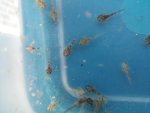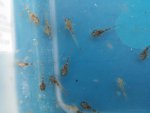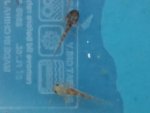jmsstoner
Member
- Joined
- Mar 29, 2012
- Messages
- 76
- Reaction score
- 4
- Points
- 8
- Location
- Oregon
- Country
- United States
- Display Name
- Jim Stoner
Mom is copper. Dad is either golden albino, melanoid, or GFP albino. Im guessing theyre copper x melanoid, but Im not 100% sure about which genes will dominate others, or who might be carrying what. The albino came from 2 leucistic parents, so Im sure hes a carrier for leucism. I got the golden and the melanoid at the same time, so they could possibly be from the same clutch. No idea about their parents though. Any info on the gene dominance of the aforementioned morphs, or help identifying these guys would be greatly appreciated.




